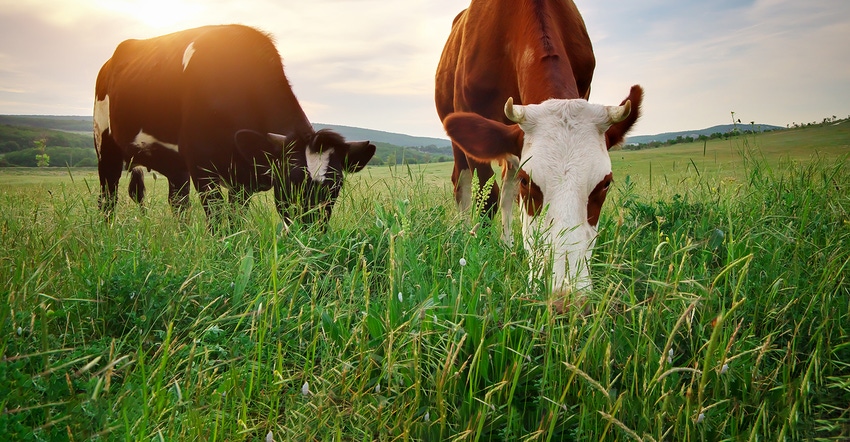April 23, 2018

By Gene Schriefer
Alfalfa is a wonderful grazing plant. It’s easy to establish, has great tonnage and good quality, and grows well in hot, dry conditions. On the other hand, it’s not perfect.
Alfalfa needs reseeding, which is costly, and it needs to be mechanically harvested three to four times a year if it’s not grazed. In addition, our typical cool, wet May weather can make that first harvest challenging. Alfalfa sucks up a lot of fertilizer dollars, can winterkill some years and carries some bloat risk.
Big bluestem as a forage grass caught my attention in 2012 while at the Kellogg Biological Research Station in Michigan. Big bluestem (Andropogon gerardii) is a dominant warm-season grass of the prairie ecosystem. Michigan was experiencing the same heat and lack of rainfall as Wisconsin, and their warm-season forage plots on a sandy loam soil, while lower-yielding than normal, were grossly outperforming our Wisconsin cool-season forages.
In 2013, I studied warm-season grass plots at a conference at the University of Illinois. With more normal rainfall, their plots were pushing the 5 to 7 tons per acre range. Rob Mitchell, a USDA Agricultural Research Service warm-season grass breeder from Nebraska, presented his research at this conference. One of his released varieties of big bluestem was producing cattle gains of 2.8-plus pounds per day.
Big bluestem forage samples I’ve taken locally came back at 10% crude protein level and still hitting 60% total digestible nutrients while vegetative. That is ideal beef cow forage for grazing — not the low-quality forage I assumed warm-season grasses to be.
In a 100% cool-season grass system, we have an abundance of forage in May and June, a shortage in July and August, and about the right amount in September and October. Big bluestem is a perennial forage species that does not need reseeding, prefers high temperatures, produces tonnage and supports good weight gains. It’s just hitting its maximum growth rate when our cool-season forages are producing more lignin, losing quality and slowing down in their growth rate. There are advantages to adding a few warm-season grass paddocks to fill in the summer slump period and even out the forage supply.
Having a contingency plan for your grazing resource in the event of drought — or even the longer periods of heat and reduced rain becoming more typical of summer in Wisconsin — is effective risk management. Big bluestem provides flexibility to the beef producer. If we need the forage, we can graze it from late June through August and extend the rest period on our other paddocks. If we do not need the forage for grazing, we can harvest it mechanically and in a single cut, get the yield that took three harvests with alfalfa/grass, reducing harvest expense.
These warm-season native grasses do present some considerations for the grower. They are slower to establish compared with cool-season forages and may not produce significant forage in their seeding year. Seeding costs are high; seeds are light and fluffy, making establishment difficult; and they have different management requirements. Warm-season grasses store energy in the lower stem and should not be grazed at temperatures below 50 degrees F. They also go dormant with the first frost and require rest for six weeks before dormancy.
What is the value of having something growing when everyone else is out of grass? Or feeding hay or grazing residual too close and stressing your pasture? Looking at yield and persistence, big bluestem is another low-cost forage option that may fit your operation. For more information about big bluestem, check out the University of Wisconsin Extension’s Team Forage webpage.
Schriefer is the Extension ag agent in Iowa County, Wis. This column is provided by the University of Wisconsin Extension’s Wisconsin Beef Information Center.
You May Also Like




